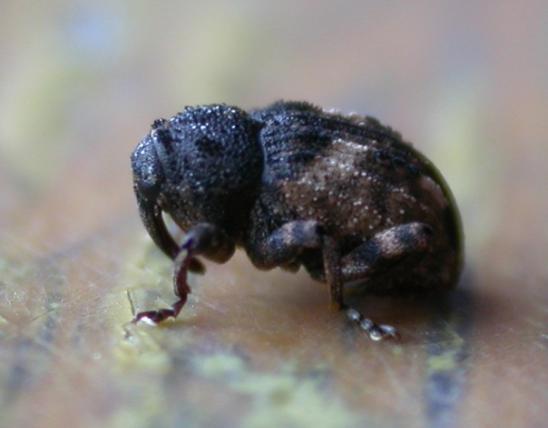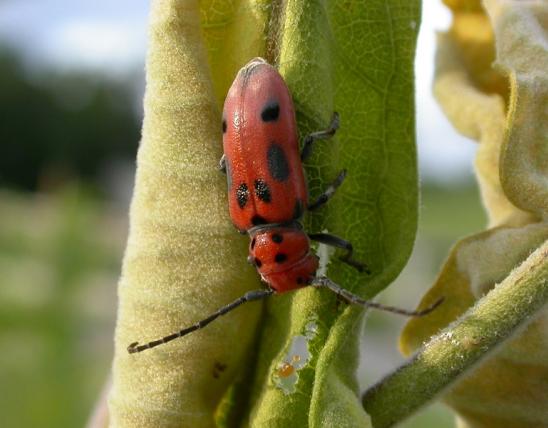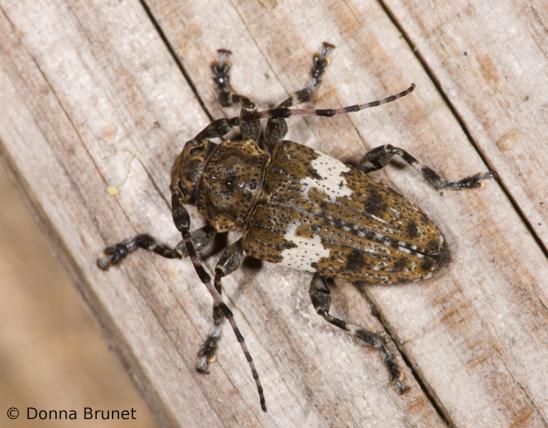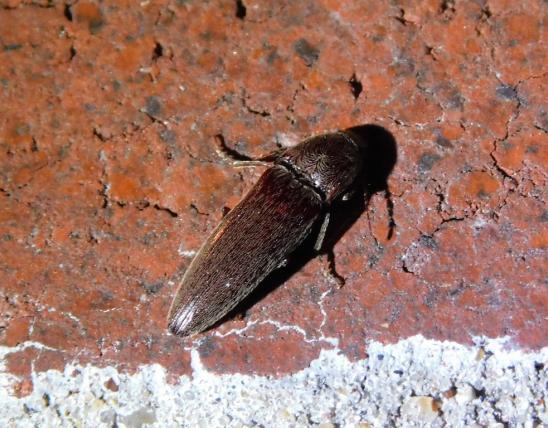
Have you ever seen an acorn with a tiny hole in it, or with a pudgy white grub inside, eating the nutmeats out of it? If so, then you've probably met some species of acorn or nut weevil.
In North America north of Mexico, there are about 30 species of weevils in genus Curculio. Weevils in this genus have very long, narrow beaks and chunky bodies. These are not colorful beetles, being shades of brown, tan, and gray, often mottled with camouflage markings.
Females typically have longer snouts than males. In some species of this genus, the female's snout may be longer than the rest of her body. For each egg, the female nut weevil bores a tiny hole into a developing acorn, hickory, or other nut. Her snout is long and slender for this purpose. The pudgy larva develops inside the nut. Nut weevil larvae eat the nutmeats of acorns, hickory, or other nuts, then bore out of the nut, drop to the ground, and live in the soil before pupating and emerging in spring as an adult.
Similar species: Several types of weevils (and even members of other beetle families) are commonly called curculios, even though they are not in this genus. One prime example is the so-called plum curculio (Conotrachelus nenuphar), which is a serious pest on a wide variety of stone fruits. It was originally described to science as Curculio nenuphar, and when it was transferred to a different genus, the "curculio" name stuck.
There are about 2,500 species in the weevil family in North America north of Mexico.
Learn more about this and other weevils on their group page.





























